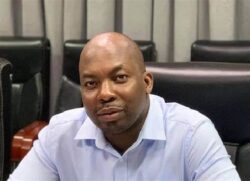By Samuel Adjetey Osekre
Introduction
Ghana, like many developing nations, has often struggled to achieve its full potential, not due to a lack of ideas or resources but rather from the lack of continuity in national projects and policies.
The frequent interruption of development projects, often triggered by changes in government, has contributed to stunted growth and inefficiency. A National Development Plan, which remains sacrosanct regardless of which government is in power, is necessary for Ghana to break free from the cycle of discontinuity that hampers its socio-economic development.
This article will delve into the impact of inconsistent governance on Ghana’s development, highlight the importance of technical knowledge and educational reforms, and outline a path toward Ghana realizing its full potential as a self-sufficient, globally competitive nation.
This feature article provides an in-depth look at how Ghana can develop sustainably by addressing the issue of abandoned projects and emphasizing the need for technical knowledge and educational reform.
The Impact of Government Changes on National Projects
Since independence, Ghana has seen a multitude of national projects initiated with great fanfare, only to be halted or abandoned by subsequent governments. A notable example is the Saglemi Housing Project initiated by the John Mahama administration.
Designed to provide 5,000 affordable homes, the project came to a halt after a change in government, leaving it in limbo despite significant investment.
Inconsistent policy implementation is not just a matter of wasted resources, it stalls economic progress and undermines public trust in leadership. According to a 2019 report by the Institute of Economic Affairs (IEA), Ghana has lost over GH₵1.5 billion between 2000 and 2019 due to halted or abandoned projects. This money could have been better used to bolster sectors like healthcare, education, and infrastructure.
The Economic Cost of Abandoning Projects
Data from the Ministry of Finance indicates that Ghana’s debt-to-GDP ratio, which stood at around 54.2% in 2017, rose to 80.1% by the end of 2022. A significant portion of this debt stems from unfinished projects that require continual funding but yield no returns due to lack of completion. These financial pressures often force Ghana to turn to external sources like the International Monetary Fund (IMF) for bailouts, further compounding the economic instability.
One of the most visible impacts of IMF intervention is the implementation of austerity measures. For instance, in 2015, under an IMF program, the Ghanaian government had to cut back on public spending, including key infrastructure projects, to reduce the budget deficit. While such programs may stabilize the economy in the short term, they often result in long-term stagnation by curtailing essential development initiatives.
The Importance of a National Development Plan
A well-structured National Development Plan, insulated from political interference, could provide a blueprint for sustainable growth. Countries like China and Singapore offer key lessons in this regard.
In China, the five-year national development plans have been instrumental in its meteoric rise as an economic superpower. These plans focus on long-term goals, regardless of leadership changes. Similarly, Singapore’s economic transformation, led by a consistent, long-term vision, took it from a developing nation to a first-world economy in just a few decades.
For Ghana, adopting a similar approach would ensure that national projects are executed to completion, generating the expected economic and social returns. Moreover, a national plan would prevent the ad hoc nature of project selection, which often prioritizes political gain over national interest.
The Role of Technical Knowledge in National Development
One of the key drivers of sustainable development is technical knowledge, especially in sectors like agriculture, engineering, and manufacturing. However, Ghana has historically underinvested in technical and vocational education, leading to a mismatch between the skills available in the workforce and the demands of the economy. According to the Ghana Statistical Service, unemployment among the youth reached 13.4% in 2021, with many graduates lacking the practical skills required by employers.
A shift toward technical education could help address this issue, providing Ghanaians with the skills they need to build and maintain infrastructure, innovate in agriculture, and industrialize key sectors of the economy. The government’s Technical and Vocational Education and Training (TVET) initiative is a step in the right direction, but more needs to be done to ensure that this sector is well-funded, well-organized, and able to meet the demands of the modern economy.
Countries like Germany have successfully integrated vocational training into their education systems, creating a highly skilled labor force that drives innovation and economic growth. Ghana could emulate such models to build a workforce that not only supports national development projects but also leads innovation in critical sectors like renewable energy, technology, and construction.
Educational Reforms: Creating a Knowledge-Economy
Education reform is central to the long-term socio-economic development of any nation. The 2017 Free Senior High School (SHS) policy in Ghana was a bold step towards improving access to education. However, access alone is not enough. The curriculum must be aligned with the needs of the economy, with a strong emphasis on science, technology, engineering, and mathematics (STEM) subjects, as well as critical thinking and problem-solving skills.
As of 2022, only 12% of SHS students enrolled in technical education programs, according to the Ministry of Education. This figure needs to increase significantly if Ghana is to create a workforce capable of driving national development. Furthermore, universities and other higher education institutions must be encouraged to collaborate with industries to ensure that graduates have the skills and knowledge required by employers.
Finland, one of the world’s leaders in education, offers a model for Ghana to consider. Its education system emphasizes flexibility, creativity, and practical skills, producing students who are well-prepared for the demands of the modern economy. Ghana’s education reforms should aim not just to increase access to education but to ensure that the education system is producing graduates who are prepared to solve the country’s most pressing challenges.
Historical Trends in Ghana’s Socio-Economic Development
Ghana’s socio-economic landscape has evolved significantly since independence, marked by periods of growth and decline. The country’s GDP per capita, which stood at USD 362.46 in 2000, had increased to USD 2,445.45 by 2021 (World Bank). However, much of this growth has been uneven, with significant portions of the population still living in poverty and unemployment rates remaining stubbornly high.
From the post-independence era under Kwame Nkrumah, where industrialization was emphasized, to the structural adjustment programs of the 1980s, Ghana’s development has been shaped by external and internal pressures. However, what has remained constant is the need for a consistent development policy, one that transcends political cycles and is aimed at long-term growth.
The future of Ghana depends on the choices we make today, the choices that must prioritize continuity, education, and self-sufficiency.
- Implement a National Development Plan that binds successive governments to follow through on national projects and policies.
- Increase investment in technical and vocational education, aligning it with the demands of the modern economy.
- Reform the education system to emphasize STEM and critical thinking skills, ensuring that graduates are prepared for the workforce.
- Ensure that national projects are fully funded and completed to prevent wastage of resources.
- Foster a culture of innovation, encouraging industries to collaborate with educational institutions.
Conclusion
Ghana stands at a crossroads. The country’s potential is undeniable, but it will remain unrealized unless there is a shift towards long-term, sustainable development. A National Development Plan that is binding on all governments, regardless of political affiliation, is essential for ensuring the continuity of national projects and policies. Furthermore, technical knowledge and educational reforms must be prioritized to create a workforce that can drive the country’s development.
By adopting these measures, Ghana can position itself as a self-sufficient, globally competitive nation, breaking free from the cycle of debt dependency and interrupted progress. The time for action is now.
0244807880










